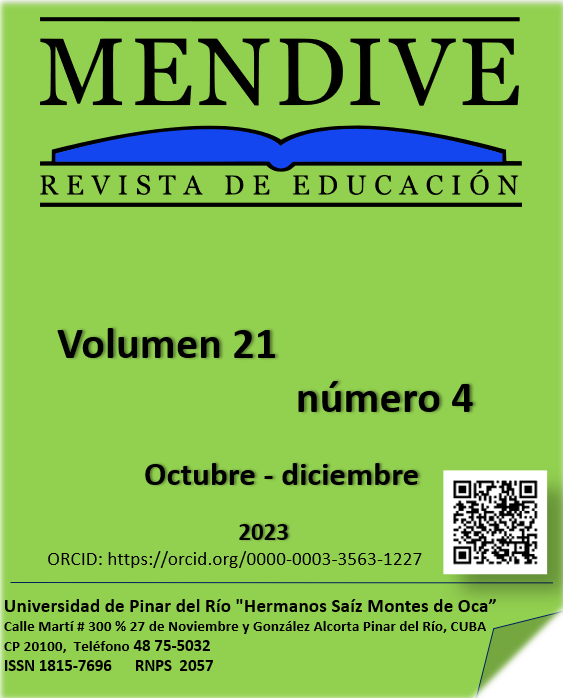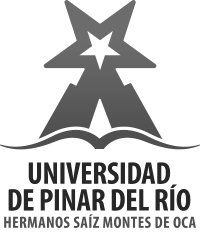The use of Google drive and the production of written texts in students of a national university, 2023
Main Article Content
Abstract
During the pandemic, the quarantine actively promoted, on Google dirve, collaborative work among university students. This tool allowed not only to share documents online, but also to modify them in real time, as well as create folders, files, among others. The objective of the research was to determine the perception between the use and management of the Google Drive application and the production of academic texts in students of various majors at a national university. For this, two questionnaires were used to measure both variables: Google drive and textual production. The results showed that there is a direct and significant relationship between the perception of the use of Google drive and the improvement in the production of texts in the students of a national university, 2023. In conclusion, the students improved their textual production using the Google drive tool.
Downloads
Article Details

This work is licensed under a Creative Commons Attribution-NonCommercial 4.0 International License.
References
Aliaga, M. y Soncco, N. (2022). Uso del Google drive y el aprendizaje colaborativo en los estudiantes de ginecología del IX semestre de una universidad privada Huancayo, 2021. [Tesis de maestría]. Universidad Continental. https://repositorio.continental.edu.pe/bitstream/20.500.12394/11732/2/IV_PG_MEMDES_TE_Aliaga_Soncco_2022.pdf
Almidón, C., Almidón, Á. & Landeo, A. (2021). Experiencias significativas con estudiantes de educación universitaria para la producción de textos académicos: Significant Experiences with University Education Students for the Production of Academic Texts. Revista De Filosofía, 38(98), 356-373. https://doi.org/10.5281/zenodo.5528046
Cassany, D., Luna, M. y Sanz, G. (2003). Enseñar lengua. (6a. ed.). Grao.
Cassany, D. (2003). Describir el Escribir. Cómo se Aprende a Escribir. (2a. ed.). Paidós.
Estévez, Z., Garcés, E. y Chenet, M. (2021). Fundamentos teóricos y estrategias para la producción de textos en el aula desde la perspectiva motivacional, lingüística y cognitiva. Revista de filosofía (Venezuela), 38(98), 326-339. https://doi.org/10.5281/zenodo.5527621
León, F. y Jiménez, C. (2022, abril-junio). Experiencias docentes durante la pandemia = Curso experimental. Educación Química, 33(2). http://dx.doi.org/10.22201/fq.18708404e.2022.2.80235
López, M. y Bernal, C. (2018). El perfil del profesorado en la Sociedad Red: reflexiones sobre la competencia digital de los y las estudiantes en Educación de la Universidad de Cádiz. IJERI: International Journal of Educational Research and Innovation, (11), 83100.
Manrique, M. y García, M. (2019). Producción de textos académicos en las prácticas de enseñanza de los docentes de lengua en la Universidad Nacional Experimental del Táchira. Lengua y Habla, (23): 557-568. https://www.redalyc.org/journal/5119/511966657036/
Meza, P., Castellón, M. y Gladic, J. (2021). Problemas de escritura en la producción de textos de estudiantes de Derecho y Medicina. D.E.L.T.A., 37(1). 1-29. http://dx.doi.org/10.1590/1678-460X2021370109
Ñañez, M. y Lucas, G. (2017). Nivel de redacción de textos académicos de estudiantes ingresantes a la universidad. Opción, 33 (84): 791-817. https://dialnet.unirioja.es/servlet/articulo?codigo=6402390
Sultanova, L., & Belando, M. (2022). Use of network technologies in the professional activities of adult education teachers in Ukraine. IJERI: International Journal of Educational Research and Innovation, (17), 231242. https://doi.org/10.46661/ijeri.6380
Van Dijk, T. y Kintsch. (1983). Estructuras y funciones del discurso. México: Siglo XXI Barcelona (España) Ediciones Paidós.


